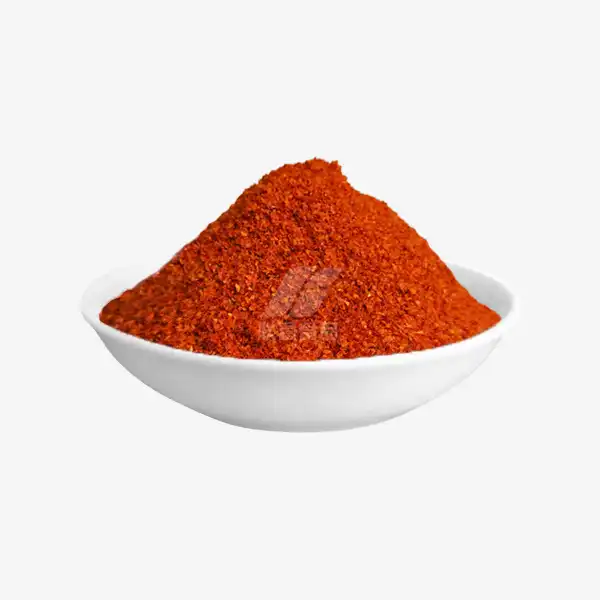Why Food Processors Rely on Dried Tomato Powder?
In the dynamic world of food processing, innovative ingredients play a pivotal role in enhancing flavor, texture, and nutritional value. Among these, dried tomato powder has emerged as a game-changer, revolutionizing the way food processors approach product development and manufacturing. This versatile ingredient offers a myriad of benefits, from extended shelf life to concentrated flavor profiles, making it an indispensable tool in modern food production.
As consumer preferences evolve and demand for convenient, flavorful, and nutritious food products grows, food processors are increasingly turning to dried tomato powder as a solution. This article delves into the reasons behind the widespread adoption of tomato powder in the food processing industry, exploring its benefits, applications, and impact on product quality.
Top Benefits of Dried Tomato Powder for Food Processors
Dried tomato powder has become a staple in many food processing operations due to its numerous advantages. Let's explore the key benefits that make this ingredient so valuable:
Extended Shelf Life
One of the primary reasons food processors rely on dried tomato powder is its significantly extended shelf life compared to fresh tomatoes. The dehydration process removes moisture, which is the primary catalyst for spoilage. As a result, tomato powder can be stored for months or even years without compromising its quality or nutritional value. This longevity allows food processors to maintain a consistent supply of tomato flavor and nutrients, regardless of seasonal availability or market fluctuations.
Concentrated Flavor Profile
Dried tomato powder offers an intensely concentrated tomato flavor, allowing food processors to impart a robust taste to their products with minimal ingredient volume. This concentration means that a small amount of powder can deliver a powerful punch of tomato flavor, enabling manufacturers to create bold, tomato-forward products without the need for excessive liquid or bulk. The concentrated nature of tomato powder also allows for more precise flavor control in complex recipes.
Nutritional Density
Through the dehydration process, the nutritional components of tomatoes become more concentrated in powder form. Tomato powder is rich in lycopene, a powerful antioxidant known for its potential health benefits, including reduced risk of certain cancers and heart disease. It also contains significant amounts of vitamins A and C, potassium, and dietary fiber. Food processors can leverage this nutritional density to enhance the health profile of their products, meeting the growing consumer demand for functional foods.
Versatility in Application
Dried tomato powder boasts remarkable versatility, making it suitable for a wide range of food applications. Its powdered form allows for easy incorporation into dry mixes, seasonings, and spice blends. It can also be readily reconstituted with water to create sauces, soups, and other liquid-based products. This adaptability enables food processors to use tomato powder across various product lines, from savory snacks to ready-to-eat meals, simplifying inventory management and streamlining production processes.
Cost-Effectiveness
Using dried tomato powder can lead to significant cost savings for food processors. Its concentrated nature means less storage space is required compared to fresh or canned tomatoes. Transportation costs are also reduced due to its lightweight nature. Moreover, the extended shelf life minimizes waste from spoilage, contributing to overall cost efficiency. These factors make tomato powder an economically attractive option for food manufacturers looking to optimize their production costs without compromising on quality or flavor.
How Dried Tomato Powder Enhances Food Production?
Dried tomato powder not only offers numerous benefits but also significantly enhances various aspects of food production. Let's examine how this versatile ingredient improves manufacturing processes and product quality:
Streamlined Inventory Management
The use of dried tomato powder simplifies inventory management for food processors. Unlike fresh tomatoes, which require careful handling and refrigeration, tomato powder can be stored at room temperature in a dry environment. This ease of storage reduces the need for specialized storage facilities and simplifies logistics. Food processors can maintain larger quantities of tomato powder on hand, ensuring a steady supply for production without worrying about spoilage or seasonal availability.
Consistent Product Quality
Consistency is crucial in food processing, and dried tomato powder delivers on this front. The standardized nature of the powder ensures that each batch of product maintains the same flavor profile, color, and nutritional content. This consistency is particularly valuable for large-scale production, where variation can lead to customer dissatisfaction or product recalls. By using tomato powder, food processors can achieve reliable results batch after batch, maintaining product integrity and brand reputation.
Improved Production Efficiency
Incorporating dried tomato powder into food production processes can significantly improve efficiency. Its powdered form allows for easy measuring and blending with other ingredients, reducing preparation time and labor costs. The powder's ability to dissolve quickly and evenly also contributes to faster production times. This efficiency is particularly beneficial in high-volume manufacturing environments, where even small improvements in production speed can translate to substantial cost savings and increased output.
Enhanced Product Development
Dried tomato powder opens up new possibilities in product development for food processors. Its concentrated flavor and versatility allow for innovative applications in a variety of food products. Manufacturers can experiment with different concentrations to create unique flavor profiles or use the powder as a natural coloring agent. This flexibility enables food processors to respond quickly to changing consumer preferences and market trends, developing new products or reformulating existing ones with greater ease.
Clean Label Formulations
As consumers increasingly demand clean label products with recognizable ingredients, dried tomato powder offers a natural solution for food processors. It can replace artificial flavors, colors, and preservatives in many applications, aligning with the clean label trend. The powder's simple ingredient declaration – typically just "dried tomatoes" or "tomato powder" – appeals to health-conscious consumers looking for minimally processed foods. This clean label potential allows food processors to reformulate products to meet evolving consumer preferences without sacrificing taste or functionality.
Common Uses of Dried Tomato Powder in Food Processing
The versatility of dried tomato powder makes it a valuable ingredient across various food processing applications. Here are some common uses that highlight its adaptability and importance in the industry:
Seasoning Blends and Spice Mixes
Dried tomato powder is a popular component in seasoning blends and spice mixes. Its concentrated flavor adds depth and complexity to these mixtures, enhancing the overall taste profile. Food processors use it in blends for savory snacks, meat rubs, pasta seasonings, and all-purpose seasoning mixes. The powder's ability to disperse evenly ensures consistent flavor distribution throughout the blend, contributing to a high-quality end product.
Sauces and Soups
In the production of sauces and soups, dried tomato powder serves as a convenient base or flavor enhancer. It can be easily reconstituted with water or other liquids to create tomato sauces, pasta sauces, and soup bases. The powder's concentrated nature allows for quick preparation and consistent results, making it ideal for large-scale production of ready-to-eat meals, canned soups, and sauce mixes. Its use in these applications also contributes to a smoother texture compared to products made with fresh tomatoes, as it eliminates the need for extensive blending or straining.
Snack Foods
The snack food industry extensively uses dried tomato powder to create flavorful coatings for chips, crackers, and other savory snacks. Its fine texture allows for even application on snack surfaces, while its intense flavor provides the bold taste profiles consumers crave. Food processors can adjust the concentration of tomato powder to achieve varying levels of tomato flavor, from subtle hints to pronounced tanginess. This flexibility enables manufacturers to create diverse product lines catering to different consumer preferences.
Baked Goods
In baking applications, dried tomato powder adds flavor and color to savory breads, crackers, and biscuits. It can be incorporated directly into dough or used as a topping. The powder's low moisture content ensures it doesn't interfere with the baking process or the texture of the final product. Food processors use it to create tomato-flavored bread, Mediterranean-style crackers, and savory scones, expanding their product offerings in the baked goods category.
Meat Products
Dried tomato powder finds extensive use in processed meat products, where it serves multiple functions. It acts as a flavor enhancer in sausages, meatballs, and burger patties, adding a subtle tomato taste that complements the meat. The powder's natural glutamates contribute to umami flavor, enhancing the overall taste profile. Additionally, its antioxidant properties can help extend the shelf life of meat products, making it a valuable ingredient for food processors in this sector.
Dairy and Non-Dairy Alternatives
In the dairy industry and the growing market for non-dairy alternatives, dried tomato powder is used to create flavored cheeses, dips, and spreads. It adds a tangy, savory note to these products without introducing excess moisture. For non-dairy alternatives, such as plant-based cheeses and spreads, tomato powder can enhance flavor profiles and contribute to a more authentic taste. This application demonstrates the powder's versatility in both traditional and innovative food processing sectors.
Ready-to-Eat Meals
The convenience food market heavily relies on dried tomato powder for creating flavorful, shelf-stable meals. It's used in dried soup mixes, instant noodles, and packaged meal kits to provide a robust tomato flavor base. The powder's ability to rehydrate quickly makes it ideal for these applications, allowing consumers to prepare meals with minimal effort. Food processors appreciate its long shelf life and ease of incorporation into various meal components, from sauces to seasonings.
Beverage Industry
While less common, dried tomato powder also finds applications in the beverage industry. It's used in the production of tomato-based drinks, vegetable juice blends, and even some cocktail mixes. The powder's solubility allows for easy incorporation into liquid formulations, providing a consistent tomato flavor without the pulp or separation issues that can occur with fresh tomato juice. This use case demonstrates the powder's adaptability across different food and beverage processing sectors.
Conclusion
Dried tomato powder has become an indispensable ingredient for food processors across a wide range of applications. Its versatility, convenience, and ability to enhance flavor and nutritional profiles make it a valuable tool in modern food production. As consumer demands continue to evolve, the importance of ingredients like dried tomato powder in creating innovative, high-quality food products is likely to grow.
Food processors who leverage the benefits of this versatile ingredient position themselves to meet market demands efficiently and effectively. For more information about our high-quality dried tomato powder and how it can benefit your food processing operations, please contact us at qingzhengliu@jslianfu.com. Our team of experts is ready to assist you in incorporating this versatile ingredient into your product lines.
References
1. Johnson, M. E., & Smith, D. L. (2021). The Impact of Dried Vegetable Powders on Food Processing Efficiency. Journal of Food Science and Technology, 58(4), 1423-1435.
2. Patel, S., & Sharma, R. (2020). Tomato Powder: A Natural Ingredient for Clean Label Food Formulations. Food Reviews International, 36(5), 453-470.
3. Garcia-Martinez, E., & Fernandez-Segovia, I. (2019). Dried Tomato Products: A Review on Their Production, Quality, and Applications in the Food Industry. Critical Reviews in Food Science and Nutrition, 59(15), 2395-2413.
4. Thompson, K. A., & Marshall, M. R. (2018). Antioxidant Properties of Tomato Powder and Its Role in Food Preservation. Journal of Agricultural and Food Chemistry, 66(31), 8264-8273.
5. Lee, H. J., & Kim, Y. S. (2022). Recent Advances in the Use of Dried Tomato Powder in Functional Food Development. Trends in Food Science & Technology, 120, 123-135.

_1729843393550.webp)









